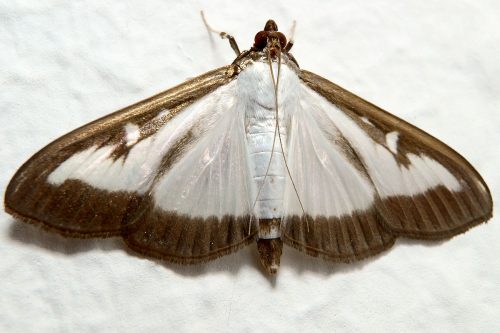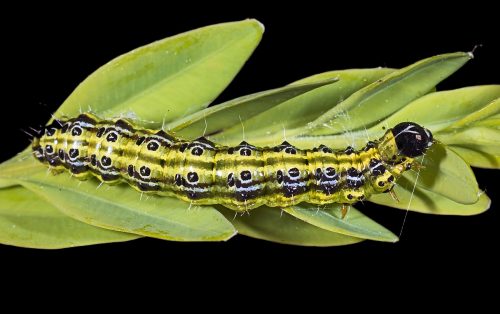The box tree moth is native to East Asia and has spread across Europe as an exotic from 2006.
Box tree moth (Cydalima perspectalis) belongs to the grass moth family (Crambidae) and is native to East Asia and has spread across Europe as an exotic from 2006.
Span of the box tree moth is four cm. A moth lives only for a short time (about eight days) and can lay + 500 eggs. The eggs are laid on the underside of the leaves. From the eggs emerge minute pale yellow caterpillars, which grow to four cm of bright green. The caterpillars overwinter in webbing in com
The caterpillars eat mesophyll and can eat a com
Among the natural enemies of the box tree moth are caterpillar-eating house sparrows, great tits and jackdaws. Chickens also know how to deal with the caterpillars.
Where to find
- Common box
- Black mulberry
Control
In horticulture, the box tree moth is controlled by roundworms: nematodes Steinernema carpocapsae and Heterorhabditis, biological agents.
In the vegetable and ornamental garden, remove any caterpillars by hand. Put them in a sealed bag in the waste container. Always remove webbing.
A somewhat rougher method is spraying the boxwood with a high-pressure washer: the caterpillars fall from the bush to the ground, where they can be picked up.
During the summer, check the com
There is a pheromone trap box tree moth for sale with female pheromones that attract male moths.
Prevention
There is a pheromone trap box tree moth for sale with female pheromones that attract male moths, preventing the females from fertilizing. By using these pheromone traps every year, there are less and less box tree moths per generation, which ultimately prevents a plague.


